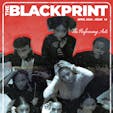BY: LIZA WILSON
As a Pittsburgh native, it was surreal to find out that Mac Miller, a hometown hero for our generation, had passed away at age 26.
I still remember being in middle school and memorizing all the lyrics to his debut album "Blue Slide Park," and the excitement of seeing another artist put my hometown on the map after Wiz Khalifa's 2010 hit "Black and Yellow."
Miller's impact, of course, extends far past Pittsburgh, as countless fans and fellow celebrities all over the world are taking the time to remember him and celebrate his life.
Mac Miller's musical talent as a rapper, songwriter, musician and producer has earned admiration from many. His latest album, "Swimming" received acclaim from fans and critics alike, and the themes of self-care, healing and growth were inspiring to listeners everywhere.
He was also known for being outspoken about socio-political issues. He has called out white rappers as a whole for using black culture for their own benefit while failing to support initiatives that uplift black people (such as the Black Lives Matter movement).
Miller was open and frank about how his white privilege has helped boost his career, which is not as common among celebrities as it should be.
Many fans have taken to social media to speak out about how Miller's music helped guide them through difficult times and let them know they weren't alone.
Still can't believe Mac is gone. He evolved with every album and had limitless potential. Reading about memories of him, he made everyone feel like he was their best friend. He was 1 of 1, and inspired everyone to love and laugh more. 😠Thank you Mac RIP #MacMiller pic.twitter.com/ID4C2niHP0
— a$AP 〽ï¸a®K (@asapMARK) September 22, 2018
He was open about his long struggle with substance abuse and how it affected his relationships with his loved ones. It cannot be denied that he had much more to accomplish in his career.
Although his death is truly devastating, we can do him the justice of remembering him for the positive impact he had on the lives of so many people, and his music that he dedicated his life to until the very end.


